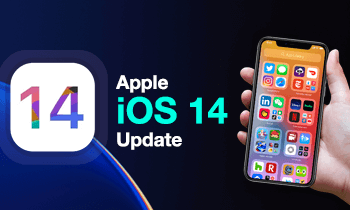Engaging patients on a deeper and more insightful level requires maintaining an ongoing relationship where patient retention is key. It plays a vital role in sustaining ongoing communication.

The current healthcare trend where patients have a wide range of options available to them, both offline and online, for seeking medical care. They are increasingly aiming for ways to access healthcare services quickly and conveniently to improve their overall well-being. Moreover, they expect personalized, convenient, and self-choice experiences with their care delivery. To retain these patients, it is a necessity for healthcare businesses to up their patient engagement strategies and keep them loyal to your brand.
Indeed, patient retention is a multifaceted endeavor that involves ongoing dedication, communication, and empathy. With well-planned patient retention strategies, you can analyze and benchmark your current engagement modes. But before we dive into the strategies, let’s understand the basics of what is patient retention.
Understanding the Fundamentals of Patient Retention
Having been in the healthcare industry for the past 14+ years, many of you have been curious to know more about “What is patient retention and how can we implement the strategies?” Patient retention, in simple terminology, means ensuring patients become loyal consumers and continue to ask for your healthcare services indefinitely as long as the care is required.
Losing patients is not an uncommon phenomenon. There is a variety of reasons why healthcare organizations lose patients and it involves factors like –
- Switching to competitor healthcare services
- Becoming involved in their work rather than in their health or
- Moving their residence from your business service location
Some factors are out of control for business owners, but the major factors can be organized and controlled through effective and essential patient retention strategies.
Ideally, patient retention goes beyond simply providing medical treatment; it encompasses the entire patient experience, from the initial contact with the healthcare provider to follow-up care and ongoing communication.
Recent research shows that new patients are more likely to incline towards businesses with personalized healthcare marketing strategies when interactions are implemented. The majority of patients prefer a customized service when interacting with healthcare providers or medical professionals, improving patient retention. Hospital and healthcare systems are building strategies to increase patient retention predicting the needs of patients that increase their engagement rate with your business. These patient retention strategies, if placed correctly, can accordingly turn patients into long-term loyal consumers for your business and also increase your referrals.
Every patient interaction ranging from scheduling the first call, the appointment, treatment, follow-up, and revisits to your healthcare business is a strategy to implement positive impressions about your services and improve patient engagement as well as satisfaction rate.
So how to increase patient retention? Let’s take a look at the various patient strategies you can execute to enhance patient engagement.
Top 10 Patient Retention Strategies to Maximize Healthcare Business Loyalty
Healthcare businesses need to stay competitive in the market to capitalize on the services they offer. Patient retention remains a top priority to stay relevant in this sector to maintain brand loyalty and patient engagement. Let’s take a look at a few patient retention strategies to help with patient journey mapping for the future of your business.
#1 Improvements in Communication
Patient-provider communication works as one of the strongest bonding factors for piloting patient satisfaction goals. When patients interact with providers, the care team in the hospital or health system is required to have proper communication derivatives set in place.
Poor communication drives patients away and discards their loyalty to businesses if they receive subpar care experiences. Hence, providing timely and accessible communication channels for patients to reach out with questions or concerns is the focal point here.
You can ensure that your team has the right information and proper methods to forward the relevant messages to resolve patient concerns in an empathetic way.
#2 Patient-Provider Interactions in Between Visits
A very prominent patient retention strategy is to integrate practices that connect with patients and provide interactions beyond the healthcare walls.
According to a study conducted on patient-provider interaction, a large number of physicians offering patients over 15 minutes of face-to-face interaction and communication have higher patient retention. In-office visitations can help integrate patient education regarding their health and treatment choices, and as a business, you can practice differentiating various interactive ways to communicate with patients in between follow-up visits.
Sending customized healthcare tips and updates can help to empower patients to take control over their care and treatment.
#3 Simplifying the Process of Appointment Booking/Scheduling
Integrating digital healthcare technologies can improve patient retention by allowing patients to book or schedule appointments through your website or mobile applications.
Data management health care can be provided through medical appointment scheduling software that enables patients to book appointments at any given time. Automated text messages or emails for confirmation and reminders can help in reducing appointment cancellations and no-shows.
#4 Having Professional Websites and Healthcare Mobile Applications
Around 83% of patients seek healthcare or medical information online, using Search Engines. Retention in healthcare data portrays the significance of having a digital presence for healthcare practitioners. Creating a customized website and building mobile health applications (mHealth apps) with meaningful information, services, features and functionalities is a go-to option for today’s smart patients.
A healthcare website serves as the digital front door to a healthcare organization, providing patients with essential information, resources, expertise, amenities, and access to services. A well-organized and user-friendly website facilitates seamless navigation, enabling patients to schedule appointments, access medical records, and communicate with healthcare providers conveniently. While HIPAA-compliant mHealth apps offer a proper and personalized way for patients to manage their health, track their progress, and communicate with healthcare providers from anywhere at any time.
#5 Efficiently Addressing Long Wait Times Using Technology
Experiencing an extended wait time during appointments can affect patient retention levels and overall patient experience. When you have a shorter wait span, patients experience reduced anxiety, improved satisfaction, and increased trust in the healthcare provider. They receive timely care and thus, feel valued and respected. This can lead to better health outcomes and increased compliance with treatment plans.
Using healthcare technology and innovative solutions such as automatic appointment scheduling, queue management systems, telemedicine, and reminder methods streamline workflows, optimize patient flow, reduce cancellations or abrupt appointment no-shows, and reduce wait times in healthcare settings.
#6 Conducting Patient Survey
After patients have visited your clinic, integrating post-visit surveys enables you as a business owner to capture the concerns patients may have about their experience or how satisfactory the appointment was with the health practitioner.
You can design the survey to gather comprehensive feedback on various aspects of the patient’s experience, including waiting time, staff interactions, facility cleanliness, and overall satisfaction. Pay attention to both positive feedback and areas where patients express dissatisfaction. Consider using software or tools to aggregate and analyze survey data efficiently.
Be respectful of patients’ feedback and address any negative responses immediately. Patients are always looking towards improved patient experiences with their suggested feedback.
Share survey results with relevant staff members and departments to ensure everyone is aware of patient feedback and committed to making necessary changes.
#7 Improving Digital Presence and Managing Online Reputation
Having a positive reputation across digital platforms impacts patient retention and improves acquisition rates for your healthcare delivery services.
Today patients often turn to the internet and social media to search for healthcare information, service providers, and reviews. By maintaining an informative website, active social media profiles, and listings on healthcare directories, you can increase your business visibility and accessibility, making it easier for patients to find and engage with you directly.
As discussed above, a well-designed website and mobile app that is easy to navigate, user-friendly, and informative creates a positive first impression. It encourages patients to choose the right healthcare provider for their healthcare needs.
Another key focus should be handling online reviews on Google Business Profile and other business listing websites proactively. You can influence patient perceptions and drive patient retention by maintaining a positive online reputation.
Showing proactiveness via encouraging patient feedback and monitoring or responding to reviews by patients across social media channels and doctor review websites can help you improve your care delivery services.
#8 Healthcare Marketing Strategy to Peak Patient Interest
By leveraging various marketing channels and techniques, healthcare providers can educate patients, increase awareness about available services, and build trust and credibility. By showcasing expertise, innovative treatments, and patient success stories through various marketing channels, you can capture the attention of both present and potential patients, keeping them engaged and informed about available healthcare options.
Through targeted engagement, enhanced accessibility, and personalized communication, healthcare marketing initiatives not only attract new patients but also foster loyalty and advocacy among existing ones.
Ultimately, by empowering patients with knowledge, convenience, and personalized care options, healthcare marketing contributes significantly to patient retention, satisfaction, and long-term success in the healthcare industry.
#9 Reaching Out During Overdue Patient Visits
It is always appreciated that a necessary extra step is taken to reach out to patients who have missed an appointment or were expected for a follow-up meeting.
By proactively contacting these patients, you can demonstrate your commitment to patient care and well-being. This outreach not only helps ensure continuity of care but also reinforces the provider-patient relationship by showing patients that their health and safety are priorities.
Additionally, reaching out to overdue patients offers an opportunity to address any barriers or concerns they may have, provide necessary support or resources, and reschedule appointments promptly, ultimately improving patient retention and satisfaction.
This determines patient retention strategies at an all-time high when businesses remember to send out simple and brief appointment reminders that are needed and duly appreciated.
#10 Implement Telehealth Platforms Ensuring Higher Patient Retention
Having an integrated telehealth approach has seen a rise in patient retention, especially during the time of the pandemic. Patients with chronic illnesses or certain impairments found teleconsultation to be a great way to keep in touch with their providers at any point in time.
Telehealth platforms offer patients convenient access to healthcare services from the comfort of their own homes, eliminating barriers such as transportation challenges and time constraints. By offering virtual consultations, remote monitoring, and online prescription refills, healthcare providers can ensure continuous care delivery and support for patients, even when face-to-face visits are not feasible.
Telehealth platforms not only enhance accessibility and convenience for patients but also demonstrate the provider’s commitment to adapting to evolving patient needs and preferences.

Enhancing Patient Loyalty through Patient Retention Solution: A Smart Strategy
A patient retention solution refers to a comprehensive approach or set of strategies implemented by healthcare providers or organizations to effectively retain patients within their care delivery system. It involves various initiatives aimed at enhancing the patient experience, building trust, and fostering long-term relationships to ensure patients continue to seek care from the same provider or organization over time.
Key features of Patient Retention Solution:
Communication Tools
Using technology for patient-provider communication.
Personalized Care
Tailoring care plans to individual needs.
Patient Education
Offering resources to empower patients with health knowledge.
Convenient Access
Providing telemedicine and online scheduling.
Follow-up Care
Ensuring smooth transitions between providers and monitoring progress.
Feedback Mechanisms
Establishing channels for patient feedback.
Staff Training
Equipping staff to provide excellent care.
Community Engagement
Engaging with the local community to raise awareness about healthcare services.
A patient retention solution combines various strategies and initiatives aimed at optimizing the patient experience, promoting patient engagement, and fostering long-term relationships to ensure patients continue to choose the same healthcare provider or organization for their ongoing healthcare needs.
Conclusion
Patients anticipate healthcare organizations and health systems to understand their needs and deliver a seamless and personalized care experience. By prioritizing patient satisfaction, communication, and personalized care, healthcare providers can build strong relationships with patients and foster loyalty over time. That’s where you implement the patient retention strategies and achieve that goal. You can leverage the expertise of Mobisoft Infotech where we take into consideration the patient journey mapping for smooth care delivery services. We always take into account patient experiences across their journey and better ways to provide healthcare data management solutions that help patients make better decisions. Connect with our healthcare expert to transform your care delivery and maintain long-term relationships with patients.

Author's Bio

Dr. Kedar has more than 12 years of experience in the healthcare domain. She advises Mobisoft Infotech in healthcare-related matters.


